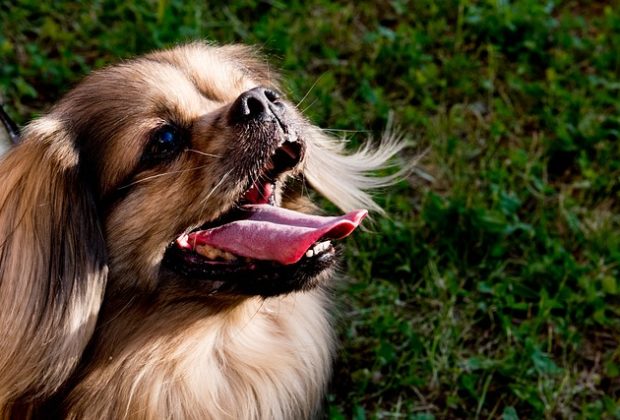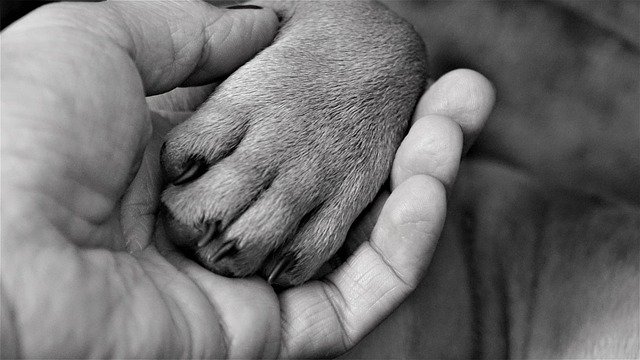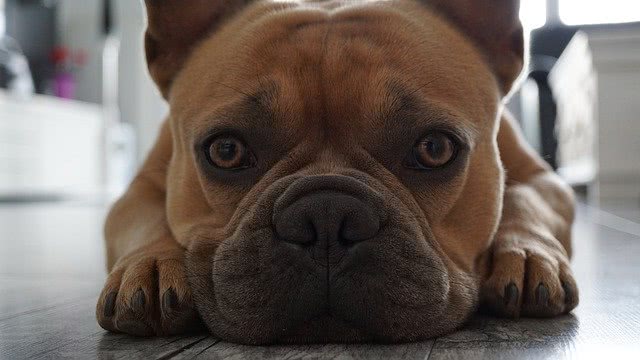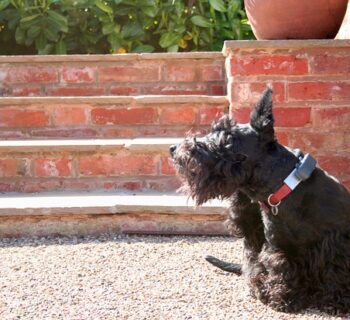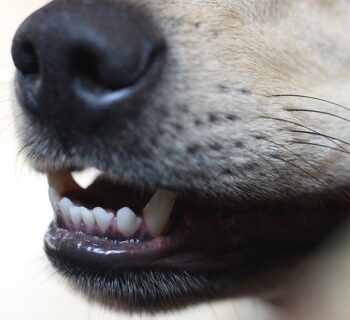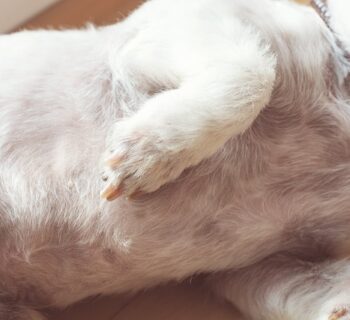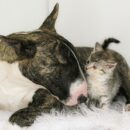Like many mammals, our cute new canines will lose their puppy teeth at some point in their lives. When do puppies lose their puppy teeth? At what point will they swap the baby teeth for adult ones? How many teeth do pups have, and how can you care for puppy teeth? I will answer these and other puppy tooth-related questions in this article.
Table of Contents
When Do Puppies Get Their First Set of Teeth?
At about 2 weeks old, our pups will develop their first little cute sets of teeth. This is about the same time their eyes open and they are also still nursing. The set of teeth, also known as needle teeth or deciduous teeth, will develop from the first two weeks to the fourth week.
5 to 6 Weeks
Most puppies will have their complete set of baby teeth at around the fifth week. This is usually 28 in total. They are also in the process of weaning and are taught to eat soft, moist food.
12 to 16 Weeks
Most puppies start to lose their baby teeth at this age, and you may notice little teeth around the home. The teeth give way to the permanent adult teeth, and because this process can be painful for your puppies, they’ll need extra attention and care. A vet visit may also be necessary, so you’re sure that your pup’s mouth is as it should be.
This is also the period for socialization for your fast-growing puppy. Introducing your pup to low-stress situations such as touching the inside or outsides of the mouth can help him tolerate having his teeth cleaned.
It would also help to teach him “bite inhibitions and commands” (more on this later). However, you must be careful at this as even though he is losing teeth, the ones left are sharp enough to cause injuries.
Even after our puppies lose their baby/deciduous teeth, the canines are usually the last to fall out.
How Many Teeth Do Puppies Have
Our pups are born toothless. Over time, they develop a set of 28 baby teeth.
When Do Puppies Get Their Permanent Teeth?
Most puppies will get their permanent teeth as soon as the baby teeth begin falling out. The latter, as said earlier, is usually between 12 to 16 weeks though it may happen later or earlier for some pups.
The incisors appear first, followed shortly by the canine, then the premolars, and finally the molars. The molars only come in as part of the permanent teeth.
How Many Permanent Teeth Does a Dog Have?
At six months or older, all temporary or baby teeth should have given way to the permanent ones. The permanent teeth are 42 in total. This may take a little longer in some dogs but ensure you inform your vet if you notice any baby teeth remaining after the time frame (8 months). These have to be removed surgically to make room for the permanent ones.
How to Care for a Teething Puppy
While your puppy will need extra care and attention when teething, if he eats, sleeps, drinks, and continues his other activities, there is really nothing to worry about. He may require a vet’s check only when the pain and discomfort disrupt his quality of life and lifestyle.
On your part, you can provide your pup with safe chews during the chewing sessions that are common when teething.
There are several soft and flexible teething toys your dog can chew on. Be careful when picking chew toys for your teething pup. Hard or inflexible ones can damage your puppy’s delicate new dentition. You can also buy some anti-chew bitter spray for use on furniture and shoes to keep your pup from chewing on them.
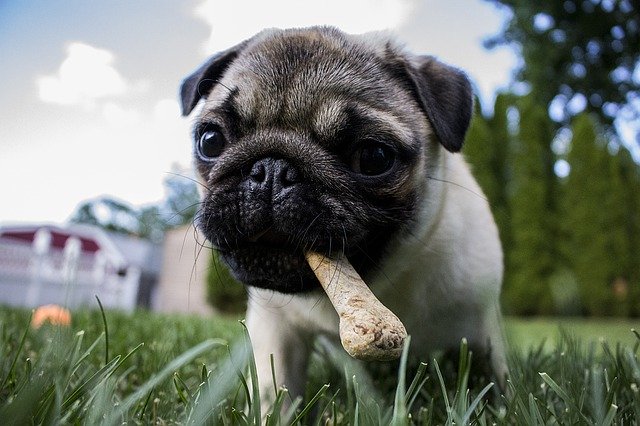
What to Do When Your Puppy Starts Losing Baby Teeth
When your puppy starts losing teeth, you shouldn't try to help him pull out the loose teeth. For one, your pup's teeth have long roots; therefore, pulling it can cause them to break from the root. This leaves a part behind and is also painful.
Also, pulling your pup's teeth out on your own can cause an infection in the part where it was pulled. A vet visit is necessary for teeth that remain after the time frame (retained teeth). Leaving a baby tooth behind with an adult set coming in can cause a disruption in the location of the incoming tooth. If left behind, your pup could become prone to tooth problems from crowding.
Again, please don't do it yourself. Instead, book an appointment with your vet for professional removal of the remaining tooth.
The Six Month Check
As said earlier, most puppies will have their complete set of adult teeth in their sixth month. This is also the point where scheduling a vet’s appointment becomes necessary.
During this visit, your vet checks for teeth growing in crooked or causing an overbite. This is to ensure that they do all corrections needed before the entire teething process is completed. When corrected at this stage, the possibility of permanent damage from corrections or defects later is greatly reduced.
How to Keep Your Pup’s Teeth Healthy
Your puppy will need the proper dental care from the onset to keep those brand new teeth clean and healthy and their breath fresh. Regular tooth brushing will help to prevent or significantly reduce the need for professional cleaning by a vet or an expert dog handler.
During cleaning, you want to make sure any toothbrush or gauze pad you use is soft and is specifically formulated for your dog’s delicate mouth.
When picking toothpaste, you should consider opting for enzymatic kinds of toothpaste for dogs. These are usually made to destroy plaque chemically and mechanically.
Avoid using human toothpaste for your pups or adult dogs. You should also avoid even those formulated for babies and young children. Using toothpaste or mouthwash made for humans can upset your dog’s stomach if he swallows it.
You can include treats, toys, and certain food types in your pup’s diet to help lessen plaque formation. But ensure they are age-appropriate, as the wrong ones can affect your pooch’s dentition.
Check out our grooming guide for further tips on brushing your dogs' teeth.
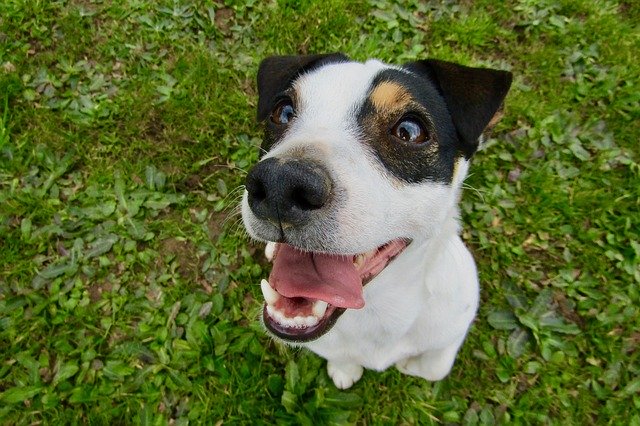
Bite Inhibition for Puppies
Puppies will try to nibble on your hands, shoes, or clothes even before their permanent teeth appear. This behavior is normal.
You may also find them trying to nip at their littermates during play. This is also normal and a part of their socialization process.
The bite inhibition training teaches your puppy to only use the "soft mouth" instead of going full force on an object or people. It one of the most important parts of your pup's entire socialization and education.
Now, there are two main stages in bite inhibition training. The first is focused mainly on reducing the force in your pup's bites, while the second stage is focused on reducing the frequency of the bites.
The goal isn't to get them to stop biting completely. Because, for one, it is an acceptable form of socialization between your puppy and his littermates. Your pup is simply replicating the same with his human family.
Which Comes First?
You can’t and shouldn’t interchange the order; bite force reduction first, then frequency reduction later. It is also important that these lessons are not only taught, but you also ensure the pup in question understands them before they are around four months old.
Inhibiting The Force Of Bites: Bite Force Reduction
This step teaches your pup to stop hurting people with his play bites. Again, yelling and you should never use physical punishments during these “lessons”. You can simply tell your puppy that his bites hurt and shouldn’t be done with a simple exclamation e.g. “ouch!”
He will naturally stop at this point and once he does, take some time to “deal with the pain”. Then, instruct him to come, sit and lie down. “Forgive” him after some time and resume the play section.
The next thing you should do is eliminate the bite pressure. You should do this even if the bites no longer hurt.
Wait for when he is chewing on you, and if he gives you or whoever is his “chew toy” at that moment a harder than usual bite, respond to the bite as if it really hurts. Your pup will come to believe that “humans are very sensitive to bites” and will learn to be careful the next time he bites on the “delicate skin”. That’s not all; he’ll also learn to be very careful when playing with other people.
Inhibiting The Force Of Bites: Frequency Reduction
You can introduce the frequency reduction lessons once your puppy learns to "bite" gently. Your pup now knows that mouthing or biting is okay, but the pressure has to be reduced. Now, he has to learn to stop when he is instructed to.
You can do this by using food or treats as both a distraction and a reward. How? Instruct your pup not to touch the food or treat in your hand for just a second with a simple instruction such as "off". Then say "take," and he can have it.
Increase this to three or even four seconds of non-contact as he masters this simple task. Then increase the duration of non-contact. Count the seconds and praise him with each second of obedience. If he touches the treat before the time elapses, repeat your seconds count from zero.
Soon, your pup will learn that “off” means that he cannot have the food for the duration of your count. As he understands the “off” and “take” instructions, lure and reward him with food to teach him to let go during his mouthing or “soft bite” sessions.
Remember to praise and let him have the treats whenever he obeys. You want your pup to grow into a well-rounded adult dog, so begin on time.
Proper Manners and Habits for Puppies
At their puppy stage, it’s easy to want to overlook some of our pups’ “wrongdoings.” Their actions are cute and harmless; at least right now, it seems so. However, we pass the wrong message by being too accepting or doing little to stop certain behaviors such as chewing.
While we’ve discussed ways to curb the behavior, we’ll also point out that some dogs can be more naturally inclined to chew on people and things than others. On the other hand, many others simply chew because they were not taught the correct manners.
We can train certain undesirable behaviors out with specific practices even if your pooch is chews or bites more than normal.
Below are specific practices you can implement with your chew-loving dog to keep him from making you or others his “chewing toy .”We can teach these even with the ongoing bite inhibition lessons throughout his puppy stage.
Your puppy should not be separated too early from his mother and the littermates. Your pooch’s animal family is where he first learns and practices the allowed social interactions. Avoid selling them off/allow them to stay at the breeder until they’re at least 12 weeks old.
Provide your little pooch with a chew toy made specifically for teething dogs. You can also offer him cloth soaked in meat broth if his biting and chewing result from teething.
These objects will help your puppy better know the things he is allowed to bite. However, be sure to have your pup supervised when playing with these chew toys.
Your puppy should not be left unattended for any length of time. If you have to leave him unattended for an extended period, put him in his crate. This not only helps to keep him from damaging your furniture or clothing while you’re away but also keeps him protected from other hazards.
At the puppy stage, hand feed your puppy. And no, he doesn’t have to be fed from your table. Feed him his food and treats by hand. You can also encourage children and other adults in the home to feed him the treats and foods in this way.
Be firm with your instructions when he grabs or nips at your hand to get the food item. Say “no” and then offer it again until he learns to collect it gently. Just like the other bite inhibition lessons, this will take time, but remember that consistency is key here. Your pup will learn as you continue the lessons.
Now tell us; When did your puppy lose his baby teeth? How did you manage your teething puppy? Did you own a chewer? If you did, share some of your bigger anti-chewing tricks and tips in the comment section below.
About the Author
Kirsten Heggarty
Kirsten created The Pet Handbook with the aim of sharing her knowledge about pets, pet food, healthy habits, and more. All of her advice is based on years of her own experience with her pets, and feedback that she has received from grateful readers about her tips. If you want to know more please read the About Me page.

